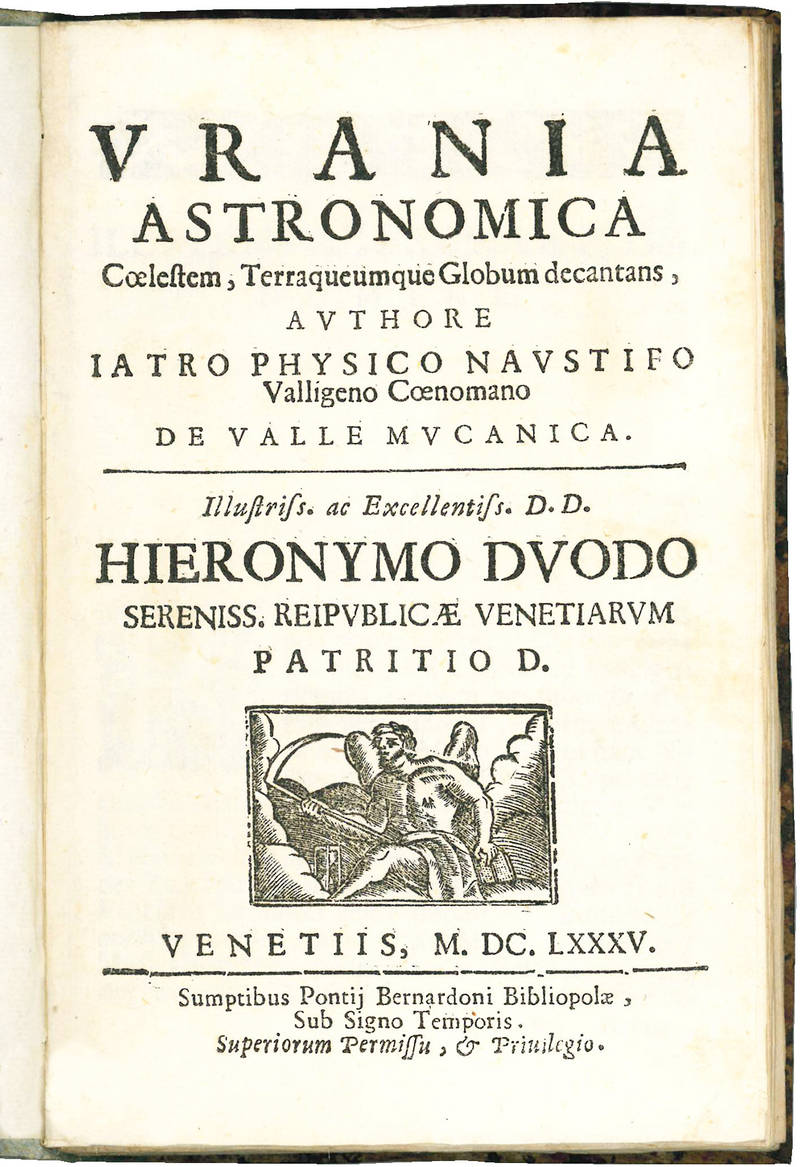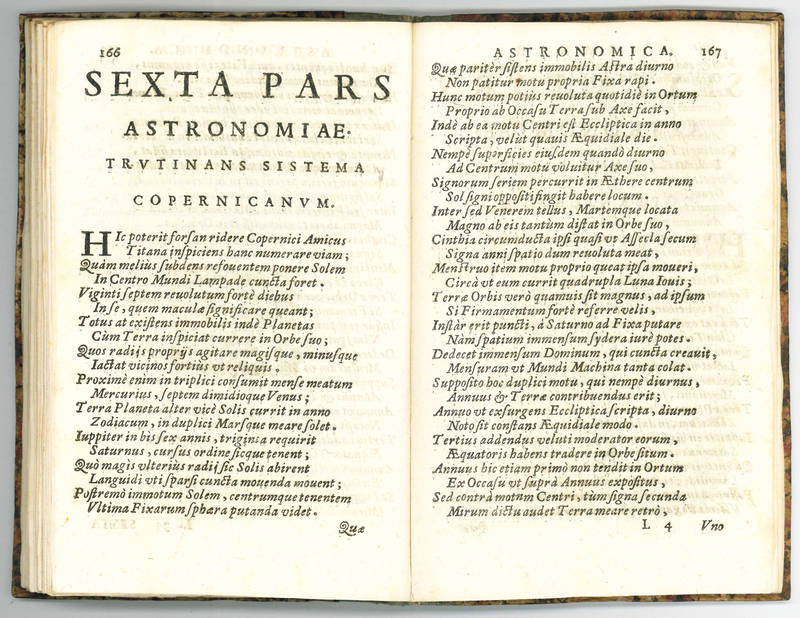Urania astronomica coelestem, terraqueumque globum decantans, authore Iatro Phyisico Naustifo Valligeno Coenomano de valle Mucanica. Illustriss. ac eccellentiss. d.d. Hyeronimo Duodo Sereniss. Reipublicae Venetiarum patritio d. Venetiis, sumptibus Pontij Bernardoni bibliopolae, sub signo temporis
Autore: BERNARDON, Ponzio (fl. 2nd half of the 17th cent.)
Tipografo: at the expenses of Ponzio Bernardon bookseller, under the sign of time
Dati tipografici: Venezia, 1685



